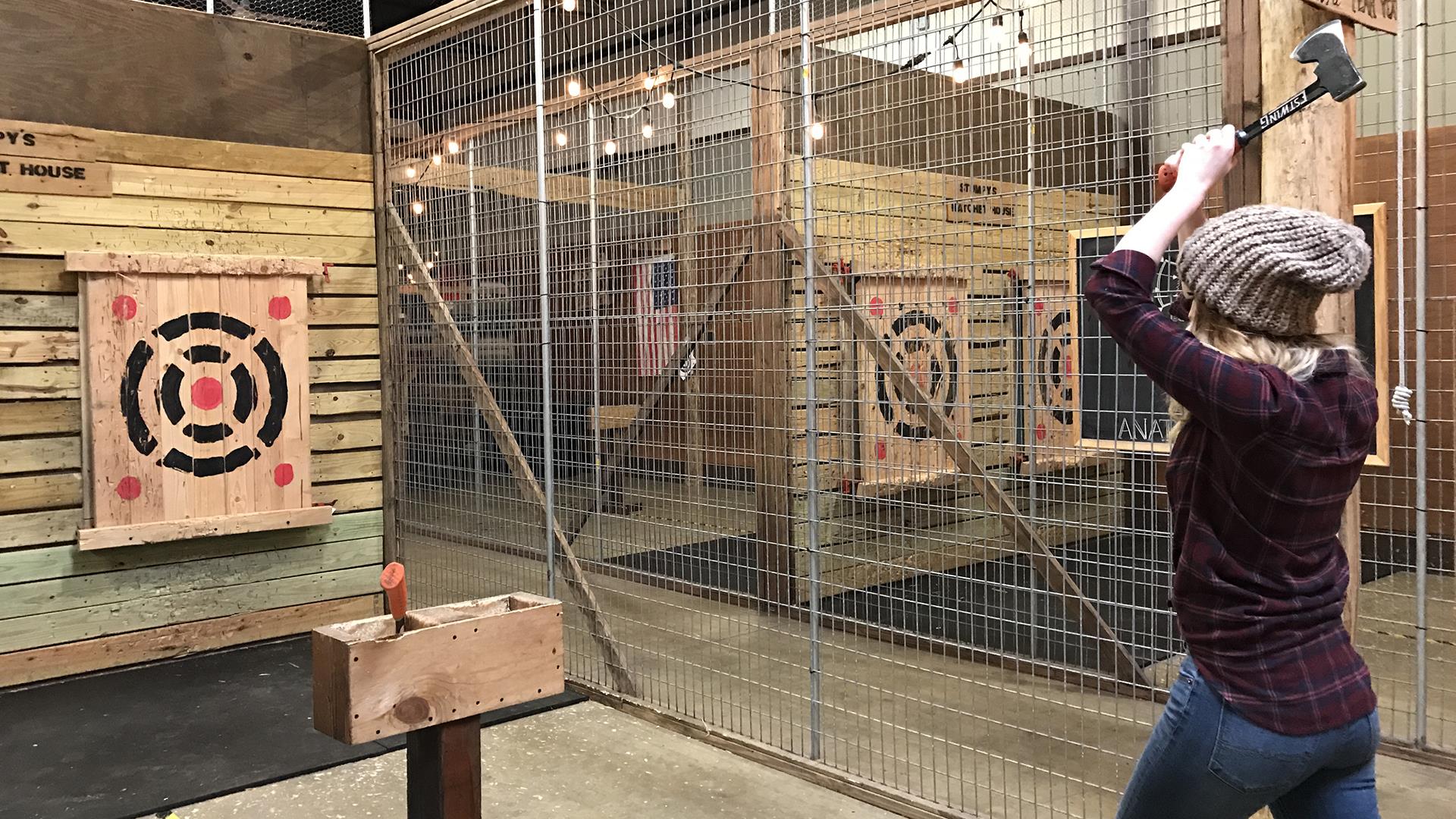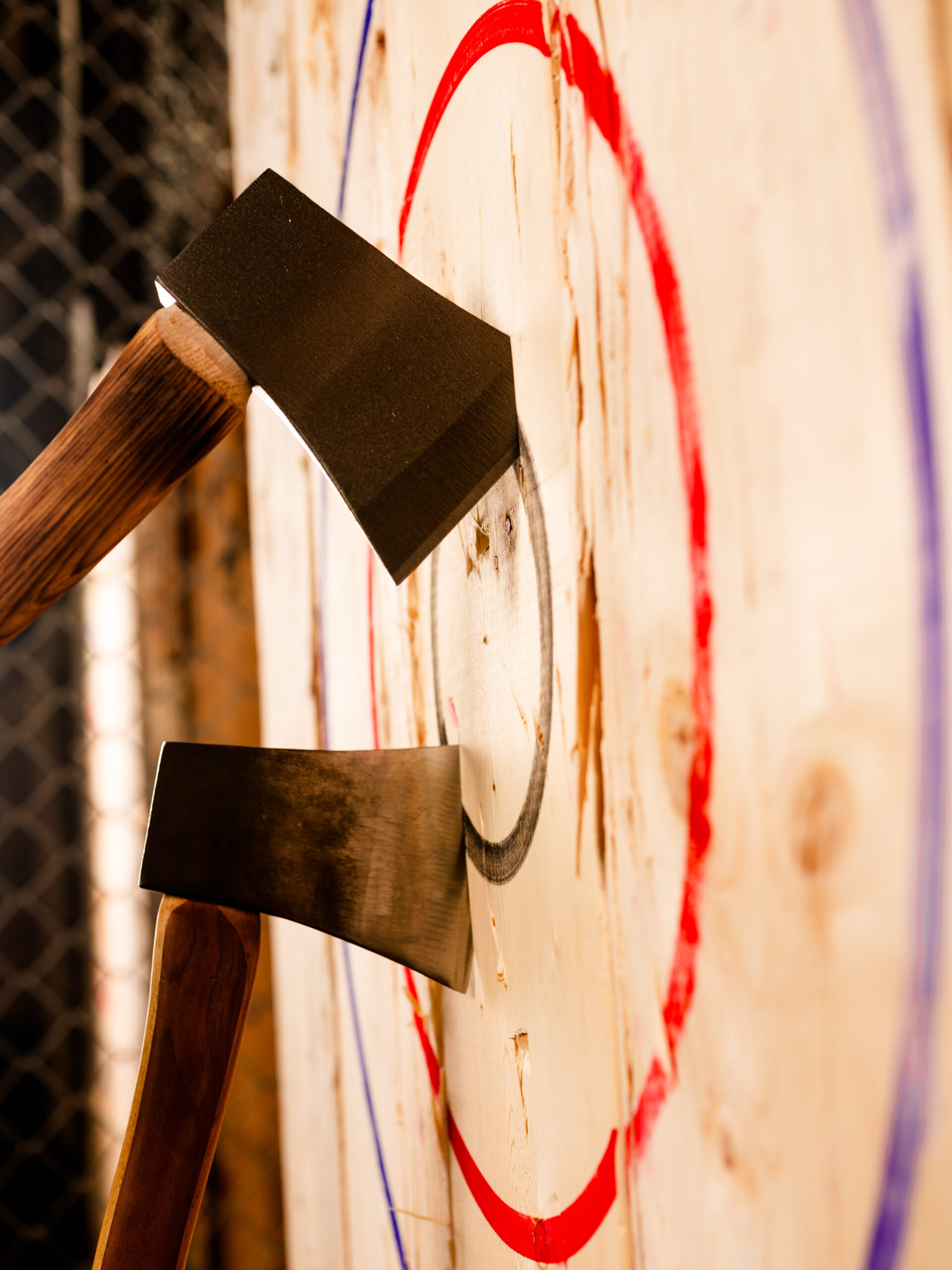The Enjoyable of Axe Throwing: How This Sport Integrates Skill and Adrenaline for a Great Time
Axe throwing has actually emerged as a mesmerizing sporting activity that masterfully links the need for accurate skill with the rush of adrenaline, offering participants a interesting and special experience. The act of tossing an axe in the direction of a target demands concentration and strategy, at the same time cultivating an ambience of sociability and pleasant rivalry. This interesting mix of psychological focus and physical exertion has actually made axe tossing a popular option for those looking for both entertainment and a feeling of accomplishment. To truly value the depth and allure of this activity, one need to consider its beginnings, the essential tools, and the foundational methods that make sure both safety and pleasure.
The Beginnings of Axe Throwing
Axe tossing, a recreational task that has gained significant appeal in current years, traces its roots back to old times. The earliest records of axe use in affordable contexts are discovered among the Celts and Vikings, who threw axes for sport as well as in combat training.
Middle ages European warriors, especially throughout the Center Ages, practiced axe throwing as component of their martial training. The Francisca, a sort of throwing axe utilized by the Franks, came to be famous for its fatal precision. This typical tool was made to be thrown at enemy guards and armor, showcasing its twin energy in both sporting activity and fight.
In even more recent history, axe throwing saw a rebirth in the logging camps of North America in the 19th and 20th centuries. Lumberjacks would certainly involve in friendly competitors, testing their precision and strength by targeting at wooden targets. This development from a survival skill to a recreational task has paved the way for its contemporary revival, with specialized venues and organizations now commemorating the sport globally.
Devices You Need
Comprehending the abundant history of axe throwing boosts the recognition of the sport's contemporary model. For leisure and competitive axe tossing, the most commonly utilized type is the hatchet, typically evaluating between 1.25 to 2 extra pounds with a handle size of around 16 inches.
Just as important is the target. Law targets are constructed from timber, with softwood ranges like yearn or cottonwood being chosen for their capability to absorb and hold the axe. The target is normally divided right into five concentric circles, each with a particular factor value, to promote rating.
Security equipment, however typically overlooked, is critical. Safety gloves can boost hold and prevent sores, while closed-toed footwear are a must to shield feet from dropped axes (ax throwing denver). A well-lit, roomy tossing area, total with security obstacles, makes sure a regulated setting where participants can focus on developing their abilities.
Basic Techniques Described
Grasping the basic strategies of axe throwing is crucial for both safety and effectiveness. The first strategy to understand is the hold. Hold the axe with a firm, yet unwinded hold, akin to holding a golf club. The leading hand should be positioned directly listed below the axe head, while the non-dominant hand supports completion of the handle.
Your leading foot needs to be slightly forward, aligning with your target. This positioning aids in preserving security and routing power accurately in the direction of the target.

Security First
Making sure security in axe throwing is paramount to developing an injury-free and delightful experience. Precaution begin with the place design. A well-designed axe throwing center attributes clear demarcations between throwing lanes, durable backdrops to capture roaming axes, and non-slip floor covering to stop accidents. Additionally, appropriate lights is important to aid participants maintain visual precision and spatial understanding.
Benefits of Axe Throwing
Axe tossing deals a myriad of advantages that extend past straightforward recreation. Physically, it provides a full-body workout, involving muscles in the arms, shoulders, back, and core. The repetitive movement of tossing the axe likewise enhances hand-eye sychronisation and great electric motor skills. For those aiming to boost their total fitness, axe throwing can work as a dynamic and appealing type of workout.
Psychologically, axe throwing needs method, precision, and focus, making it a superb method to develop cognitive skills. The concentration required to strike the target can function as a kind find this of mindfulness, allowing participants to clear their minds and lower anxiety. This psychological interaction can be particularly advantageous in helping individuals create much better problem-solving abilities and psychological durability.
Socially, axe throwing is frequently appreciated in group setups, fostering team-building and sociability. Whether as component of a company event or an informal outing with buddies, the sport urges communication and collaboration. Additionally, the public experience of learning and enhancing together can strengthen partnerships and create enduring memories.
Final Thought

The earliest records of axe use in competitive contexts are located amongst the Celts and Vikings, who tossed axes for sporting try this out activity as well as in combat training. Release the axe when your hands are about at eye degree, permitting the axe's all-natural turning to lead it towards the target.
A properly designed axe throwing facility features clear demarcations in between tossing lanes, durable backdrops to catch roaming axes, and non-slip floor covering to protect against crashes. Individuals must be instructed on the appropriate means to manage and throw the axe, stressing managed, calculated activities over powerful throws.
In recap, axe tossing stands out as a sporting activity that masterfully integrates accuracy, skill, and adrenaline.